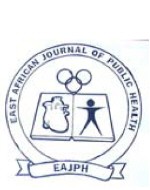
|
East African Journal of Public Health
East African Public Health Association
ISSN: 0856-8960
Vol. 5, No. 2, 2008, pp. 122-125
|
 Bioline Code: lp08023
Bioline Code: lp08023
Full paper language: English
Document type: Research Article
Document available free of charge
|
|
|
East African Journal of Public Health, Vol. 5, No. 2, 2008, pp. 122-125
| en |
Molecular Epidemiology Of Chikungunya Virus In Vellore District, Tamilnadu, India In 2006
Lakshmipathy, Deepika.T. & Dhanasekaran, Dharumadurai
Abstract
Objective:
The present study was carried out with the aim of evaluating the epidemiology of Chikungunya virus (CHIKV) in Vellore district and
also to identify the most susceptible sex and age group to CHIKV infection.
Methods:
About 100 positive blood samples were collected from various localities Vellore, Katpadi, Thiruvallam, Sathuvachari and Gudiyatham
in Vellore district and analysed. The total RNA was isolated from these infected blood samples and transcribed into its cDNA. The E1 gene of
CHIKV was amplified and subsequently sequenced. A Phylogenetic analysis was carried out with the resultant sequence. Also the RNA
secondary structure and restriction sites in the E1 gene of CHIKV were predicted using the softwares Genebee and NEBCutter, respectively. A
survey on the outbreak of Chikungunya fever in and around Vellore district was carried out with the aim of identifying the most susceptible sex
and age group to Chikungunya viral infection.
Results:
The results of the present study based on the phylogenetic analysis and BLAST studies revealed that the E1 gene sequence of CHIKV
under investigation showed 87% similarity with that of the sequence of the CHIKV strain AR18211.
Conclusion:
This study has thus revealed that the major strain responsible for the outbreak of Chikungunya fever in Vellore district was
"AR18211" strain, an African genotype. Also the survey on CHIKV fever revealed the most susceptible age group to be between 20-40 years and
the infection to be predominant among the male population.
Keywords
Chikungunya virus E1 gene, Phylogenetic analysis, African genotype, RNA secondary structure, Restriction sites.
|
| |
© Copyright 2008 - East African Journal of Public Heath
|
|
